EW, which is against us. "Offal" F-22 and F-35
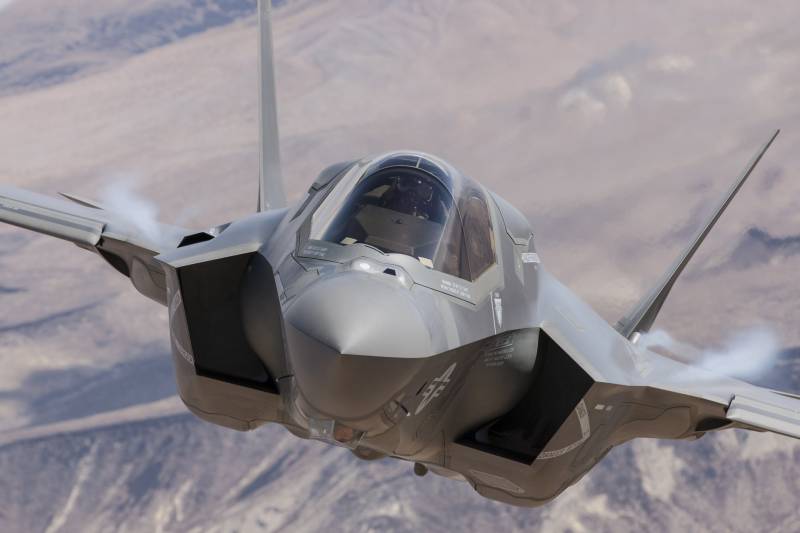
Speaking of what could work against us in the very near future, of course, first of all, it is worth mentioning the American aviation, for it is the cornerstone of both attack and defense. And there's nothing to be done, as they have been doing since the forties of the last century, when American generals and admirals caught the zen of a floating airfield advanced towards the enemy.
And the most interesting US Air Force aircraft are definitely the Raptor and Lightning. Mainly because of the relative novelty, because we will also deal with the filling of the same B-1, B-2 and B-52, but in turn. And the specialized EW and RER aircraft of the US Air Force and Navy is generally a separate story, and there is even more interesting there. So let's go in order.
So, F-22 and F-35. The new and latest US Air Force fighter-bombers, which, according to all the canons, simply had to be equipped with the latest technology.
I represent: INEWS system, which is designed to provide personal protection for the F-22 Raptor aircraft.
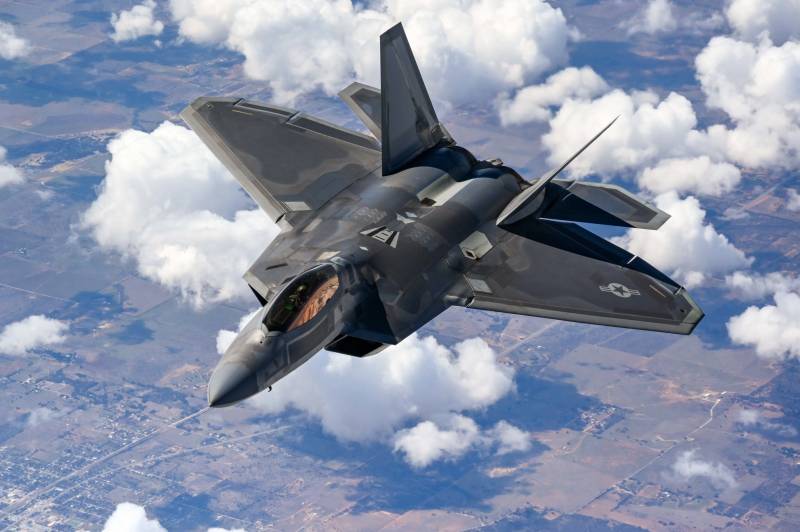
INEWS must protect the aircraft from anti-aircraft missile and air defense missile and artillery systems, guided air-to-air missiles by setting active and passive jamming of enemy radar and optoelectronic means. Before that, of course, by discovering and recognizing these means.
The INEWS system includes the following components:
− signal processing and analysis equipment;
− control processor;
− receiver in the frequency range 2-40 GHz;
− Doppler radar for detection and warning of the launch of guided missiles;
− missile launch warning receivers with multispectral sensitive elements in the range of 2–5 µm and 6–20 µm;
− interference transmitters in the ranges of 2-18 GHz and 20-40 GHz;
− anti-radar reflector ejection devices;
− IR traps and POIs.
In addition, it is also possible to include a UV receiver in the INEWS.
INEWS is integrated into a single complex of onboard electronic equipment, therefore, through the multiplex bus, it is controlled by the aircraft's expert analytical system, respectively, INEWS can operate in a fully automatic mode without distracting the pilot.
A feature of INEWS is that it was created for an aircraft using stealth technology (stealth) and having reduced signatures in the radio frequency and infrared wavelength ranges. In the design of the aircraft, wide-range phased antenna arrays were used, which made it possible to significantly reduce the effective scattering surface (ESR). Combined arrays have been applied to both Doppler detection radar and IR sensors.
All transceiver modules on board the aircraft are made using the MIS microwave technology (microwave integrated circuits designed to operate at ultra-high frequencies from 300 MHz to 300 GHz)), which made it possible to create small-sized combined phased arrays that intercept enemy RES signals in a wide frequency range, with simultaneous reduced visibility in the radio range.
Microwave monolithic integrated circuit (MIS) is an integrated circuit manufactured using solid state technology and designed to operate at microwave frequencies (300 MHz - 300 GHz). MIS microwaves, due to their small size, are successfully used from cell phones to radars based on AFAR.
We will not talk about the element base, as long as there is Silicon Valley, the USA will have order with microcircuits.
INEWS uses a DRFM radio frequency storage device that can process received signals both at carrier and at intermediate frequencies, analyze their spectral characteristics and generate interference with high accuracy and apply it to the detected radar facility. All this is controlled by a very high-performance processor, processing the information received by it and issuing ready-made solutions to the system.
DRFM is primarily useful when using expendable countermeasures such as chaff and IR traps. Every time the system's sensors talk about the exposure of an aircraft to a certain type of radar, it is the aircraft's expert-analytical system, together with missile launch warning devices (including passive ones), that calculates and determines the degree of danger and makes a decision on the use of countermeasures.
As an example, the following moment can be cited: OED (optoelectronic receivers) detect the launch of an air-to-air missile by the thermal radiation of a rocket engine in the infrared range, the system determines the missile’s motion vector, tracks the flight and automatically fires IR traps at the right time.
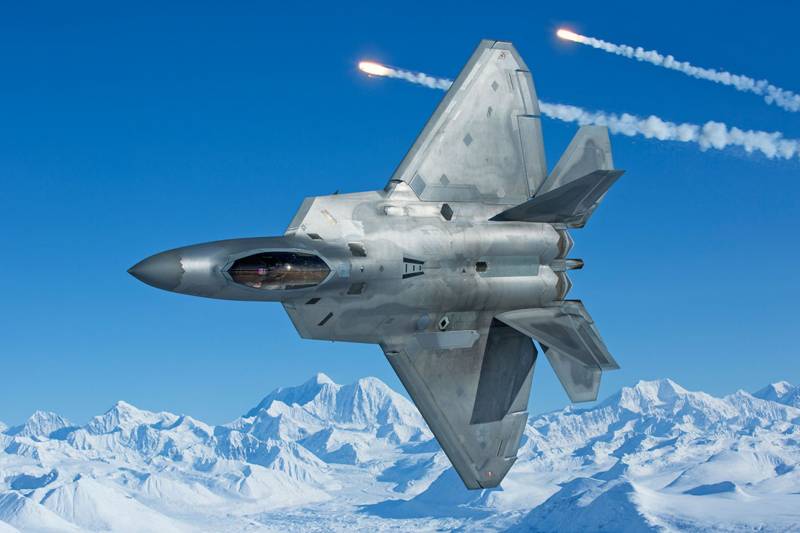
In general, the role of OED in modern aircraft safety systems is very large, so they still have a rather long way of development, as evidenced by numerous multispectral (so-called "mosaic") IR and UV direction finders, which are valuable primarily for their very low false alarm probability, high resolution and wide viewing angles.
A few words about the processor that controls everything. This is a development of a very well-known Hughes company based on standard SEM-E modules. If you do not go into complex concepts such as "parallel distributed architecture", then, in fact, this is a subsystem that combines the functions of processing and analyzing signals from all subsystems of the aircraft with the further issuance of an optimal scenario for countering threats.
INEWS tests were completed in 2000 and the system was put into production. Until 2014, it was planned to equip all F-22 aircraft, both already produced and those that were at the assembly stage, with it. Since about 1 billion US dollars was spent on the creation of INEWS, and the cost of the serial kit was about 6 million dollars, it is natural that only a large series of production could “recapture” R&D.
However, the cost of the F-22 as a whole exceeded all reasonable limits, which, in the conditions of the financial crisis, led to a significant reduction in the entire Raptor production program. As a result, the F-22 electronic warfare kit looked like this:
− AN/ALR-94 radiation warning station, which automatically detected, identified and determined the coordinates of the radar operating on the aircraft;
− AN/AAR-56 missile attack warning system, which allows detecting missile launches on the aircraft. 6 sensors spaced along the sides of the aircraft with a viewing angle of 60 degrees, give a sector of 360 degrees, providing a complete vision of the zone of possible missile launches;
− AN/ALE-52 expendable countermeasures ejection machines. Automatic devices, which, having received a signal from the control processor of the INEWS system, work out the release of traps or chaff without involving the pilot.
In general, the results of tests, exercises and regarding combat use in Syria and Afghanistan (where the enemy simply did not have more or less decent air defense) showed that INEWS can guarantee a certain safety to the aircraft and has the potential for further development.
Since the F-22 production program was eventually curtailed, it was assumed that INEWS itself and R&D developments would be used in the future to create new aircraft protection systems.
Complex AN / ASQ-239 "Barracuda" for the aircraft F-35 "Lightning II"
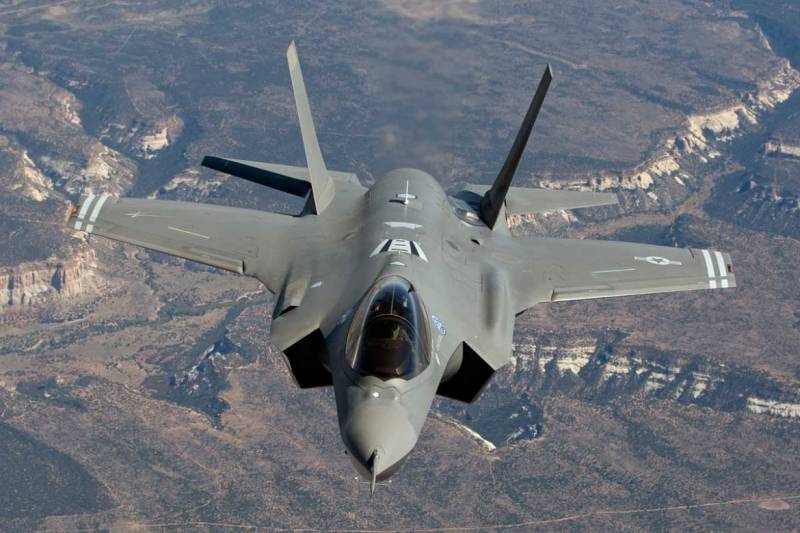
Yes, this is the next and very interesting step in stories American electronic warfare equipment. This is really a further development and modernization of the INEWS system, which was on the F-22A.
"Barracuda" from the progenitor differed in a higher degree of integration with the aircraft's avionics and its computer system, firstly, and the cost is already four times lower than INEWS, secondly.
In fact, the detailing and filtering of the data that the on-board system gives to the pilot has significantly increased, as well as more efficiently interfering in frequency and in angular coordinates.
The radiation warning station for the F-35 aircraft almost completely copies the similar AN / ALR-94 complex from the F-22A. If you look impartially, then indeed, there is no point in changing something that works more than confidently. However, for the F-35 complex, the BAE Systems developer added the AN / AAQ-37 system, which, using six IR sensors distributed over the fuselage, will provide information about missile launches towards the aircraft.
Next we have radar. It sounds strange, because where is the means of electronic suppression (REP) and where is the radar? It seems to be on opposite sides of the barricade, but ... BAE Systems announces that it is quite possible for the radar of the F-35 AN / APG-81 aircraft to work as an electronic warfare station.
In fairness, we note that such use of an airborne radar is also possible for the AN / APG-79 radar installed on F / A-18E / F Block 2 and EA-18G aircraft and for the AN / APG-77 (V) radar of the F-22A fighter. I mean, it's not really that new.
Such jamming through radar antennas is limited to the X-band, but the US military took this step quite consciously, because it is cheaper.
How it works on the example of the F / A-18E / F equipped with the ALQ-214 electronic warfare system from the same BAE Systems.
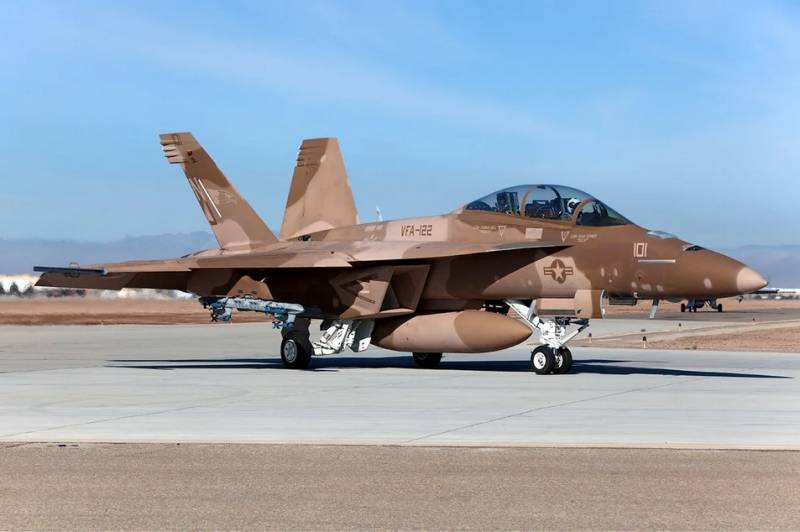
The system works in such a way that the generated jamming signal is fed to the AFAR radar of the aircraft and thus it turns out to provide a very high supply of suppression energy to the source target.
Yes, the interference sector is limited by the AFAR operating angles, but nevertheless, the F / A-18E / F Block 2 became the first aircraft that was able to use its AFAR radar to jam the enemy.
Further, Northrop Grumman, which also manufactures various radars for aircraft, joined the business. In its releases, the firm states that its APG-77(V)1 and APG-81 AFAR radars, which are used respectively in the F-22 and F-35 aircraft, will also have a similar capability. The only thing that prevents this from being done today is the lack of adequate funding today.
We conclude: the EW complex of the F-35 fighter is capable of jamming in the X-band (8-12 GHz) in the nose sector of the aircraft radar, because it is the radar that acts as the main on-board jamming tool on this fighter.
The main one, but not the only one. The AN / ASQ-239 Barracuda complex has two more radiating antennas. A number of experts believe that these are S-band antennas, 2-4 GHz, located in the nose of the wing, are also designed to jam, but not in the nose sector, but on the sides, complementing the operation of the ECM system with AFAR.
The remaining eight antennas of the AN / ASQ-239 complex work exclusively for reception.
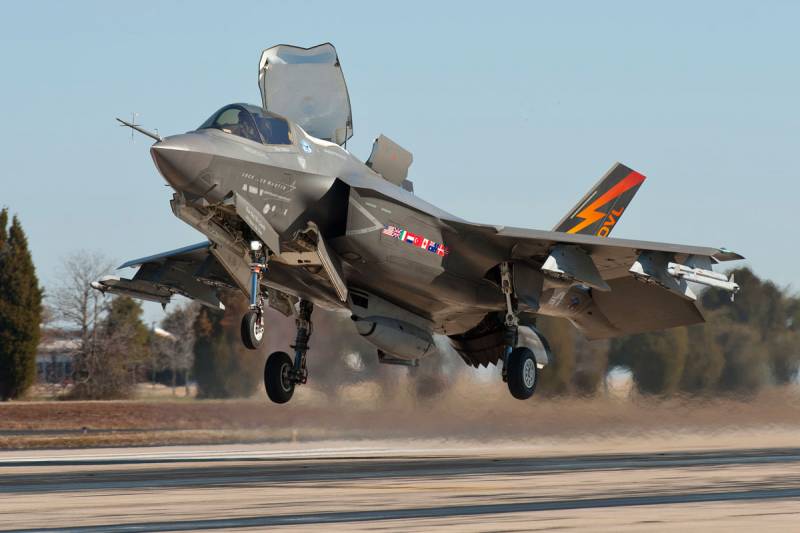
In general, "it seems, but not quite." Moreover, the AN / ASQ-94 Barracuda complex, developed on the basis of AN / ALR-239, was in turn used to refine the AN / ALR-94 in modifications.
The only thing failed upgrade, working with AN / ASQ-239 - this is the cost of AN / ALR-94. But perhaps even this is justified, because the AN / ALR-94 is still a very advanced system, although, according to some Western experts, it is not fully installed, with somewhat truncated capabilities. But the Barracuda was even more “degreased”, which raises questions and certain doubts for many, especially if the aircraft has to work against a country that has decent anti-aircraft weapons.
But in order to evaluate all this, you just need to lay out on the table the very principle of operation of both AN / ALR-94 and AN / ASQ-239, and, for now, let's leave alone the possibility of setting active jamming using the APG-77 antenna array.
If so, the AN / ALR-94 is a completely passive system, but very complex and effective. It works through a large (more than three dozen) small antennas scattered throughout the body and allows for 360-degree coverage.
The system is capable of detecting, tracking and identifying a target long before it is detected by the radar, at a distance of more than 400 km. It is difficult to say how true this is at all, but it is precisely such data (and even more) that equipment manufacturers declare.
Antennas receive all signals coming towards the aircraft from any sources, the onboard complex analyzes the signals, recognizes, prioritizes and assigns importance to targets. The radar at the same time provides data on the speed and distance to the target. If the target begins to actively “probe” the aircraft with its radar, then AN / ALR-94 provides the issuance of coordinates and other flight parameters for launching the AIM-120 missile and its guidance until it hits the target.
The long distances at which the sensors of the detection system work effectively can allow the pilots of American fighters to see the target before the radar of an enemy aircraft captures the American aircraft. This is an important point as it gives the AN/ALR-94 time gain in which to calculate the direction, type of threat and distance to it. Plus there is a very important point in determining the distance at which the enemy will see the F-22A. That is, distance/time of invisibility.
The F-22A pilot will have more time to calculate maneuvers both to avoid a possible enemy attack and to carry out his attacking actions.
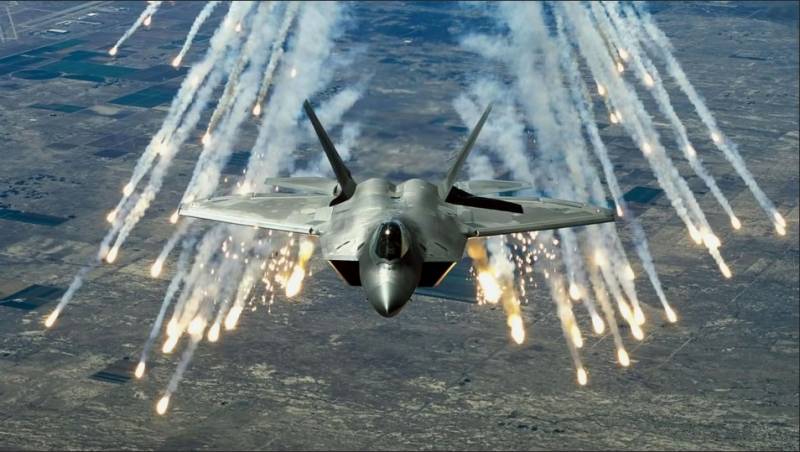
AN / ALR-94 through the displays in the cockpit gives the pilot all the information about existing threats, shows the SAM radar and early warning radar, moreover, by drawing circles that show their estimated effective firing range.
The lack of an electron-optical system for target identification should be considered a huge minus of the F-22A equipment, since it is believed that the pilot has enough means to recognize any target, even beyond the line of sight. This is justified from the point of view of finances, but it is completely unjustified from the point of view of increasing the load on the pilot in a combat situation.
Now with regard to the setting of active jamming using the APG-77. Technically, everything is very simple. AN / ALR-94 (naturally, AN / ASQ-239 can do this) from a decent distance (180 km) detects a radiation source, processes signal parameters, generates interference, and using part of the AFAR cells, forms a very narrow beam (up to 2 degrees) , which pointwise interferes with the radiation source. The radar at this point continues to track the target.
Who is better, F-22 or F-35?
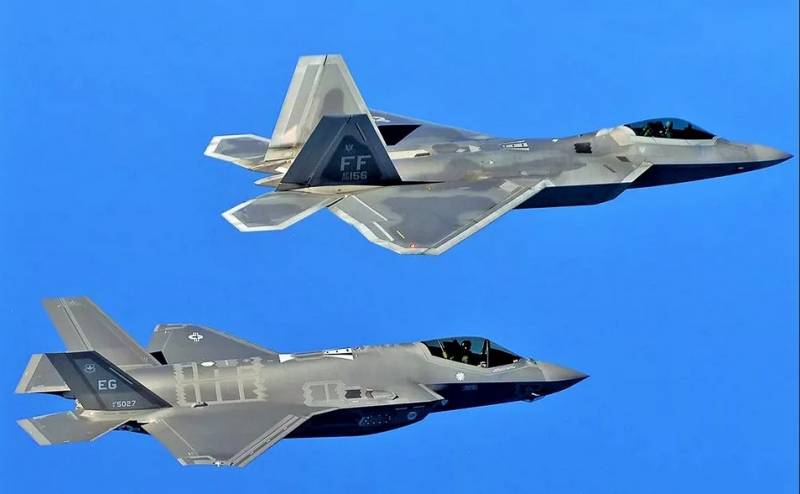
In fact, in the rank of output. It should also be noted that the AN / ALR-94 antenna system is much more complicated than the AN / ASQ-239 antenna system - more than thirty antennas (including VHF, UHF and L-bands), and not ten antennas.
The F-35 can interfere with the enemy using the onboard defense system and the capabilities of the APG-77 antenna device, but this can only be done in the forward sector of the radar and in the X-band frequencies.
Many foreign experts believe that in this regard, the F-35 is inferior even to the F / A-18E / F IDECM Block 3, the onboard defense system of which provides all-round protection using the AN / ALQ-214 (V) 3 jamming station and towed with AN/ALE-55 decoy fiber optic cable.
However, the next modification of the F-35 will make this aircraft more secure. Northrop Grumman is hard at work on a security system known as Threat Nullification Defensive Resource (ThNDR).
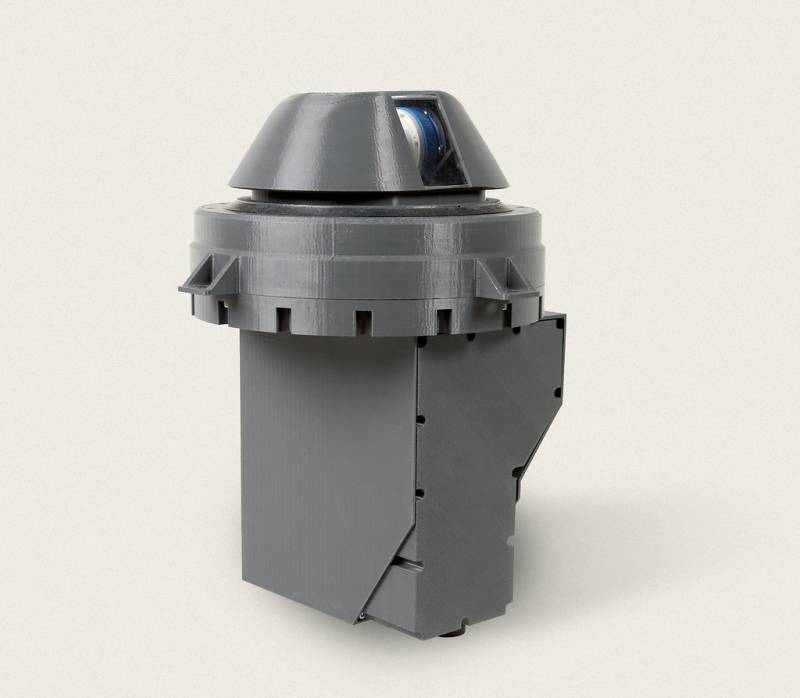
This is SOEP, an optical-electronic interference station that uses infrared lasers to jam missiles of various classes in the optical and infrared ranges.
In addition, today active work is underway to integrate the AN / ALE-35 FTOD towed decoy into the F-70 air defense system, which will provide the fighter with interference from the rear hemisphere. This is planned to be completed as part of the Block 3 fighter modernization program.
Next we have promising program for the development of the NGJ electronic countermeasure system for the F-35B.
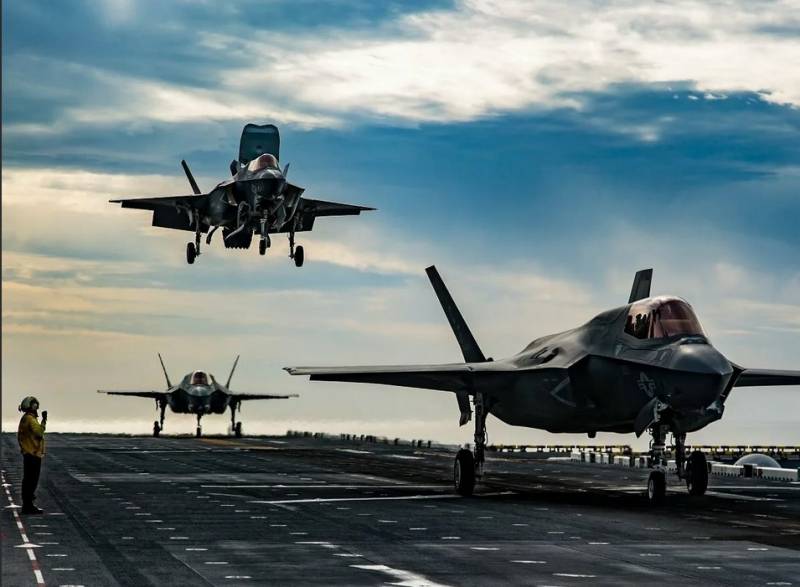
NGJ (Next Generation Jammer), the next generation system, originally intended to replace the AN / ALQ-99 ICAP III ECM system on EA-18G aircraft.
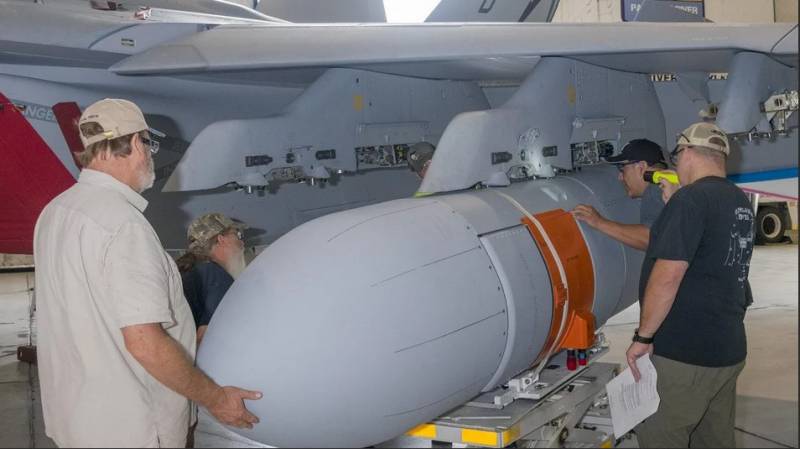
That is, this system is being developed on the instructions of the US Navy for its deck-based aircraft, however, if successful, it can be adopted by the ground forces, no one will forbid them.
The NGJ system represents the latest developments in countering threats in the radio range.
The most important and promising for electronic warfare is the 2–18 GHz band, R&D for which is carried out as part of the first stage of the program. Most of the known detection, guidance, target designation and control radars operate in this range. weapons air defense systems of various countries of the world. Including ours, of course.
The second phase of development is dedicated to the lower frequency range, 0,2-2 GHz. Some detection radars and communication systems also work here.
The third and last stage is work in the 18-40 GHz range, this range is considered very promising today and it is on it that the developers of the latest air defense systems are looking. In addition, it is in this range that radar seekers and remote radio fuses of missiles operate.
High hopes are pinned on the NGJ system, because in case of successful work on its creation, a real new generation system will be obtained, capable of much:
1. High energy potential, approximately 10 times higher than that of the AN / ALQ-99 system.
2. The ability to work simultaneously on several radio-electronic means located at a distance from each other.
3. The possibility of adaptive electronic suppression.
4. Open system architecture and modularity.
It is clear that the simultaneous suppression of several RES at different positions is provided by broadband antennas with phased arrays. It is with their help that it will be possible to form several beams of the radiation pattern of signals different in frequency, structure and polarization. The number of simultaneously jammed RES will depend on the types of electronic means, operating modes, positions relative to the aircraft with electronic jamming. But technically nothing is impossible, the main thing here is the creation of such an AFAR that will best meet the specified conditions.
Here, however, lies another nuance, which is still silent in American sources. This is the hardware base.
In general, the NGJ system is planned to be made with such a high power output due to solid state amplifiers based on gallium nitride GaN as part of monolithic integrated circuits. Currently, APAA uses signal amplifiers based on gallium arsenide GaAs, which are significantly inferior in terms of power to amplifiers based on gallium nitride.
However, here lies the devil: gallium nitride amplifiers require more powerful power sources. The 27 kW generated by the F-35 turbines is clearly not enough to provide the proper amount of energy required for the normal functioning of the NGJ EW system. Even today's standard AN/ALQ-99 system, in its truncated form, operates at the limit of the aircraft's power system.
Yes, Northrop-Grumman is running a new generation of free-flow turbines called HIRAT (High-power Ram Air Turbine) that will be able to provide the missing kilowatts of power, but this is also a new development with all the ensuing consequences.
But nevertheless, over time, all problems can be solved. And then the appearance of the NGJ system for the beginning on aircraft will allow the United States to make a significant technological breakthrough in the field of creating electronic warfare systems. And, of course, if successful, the NGJ system can become the basic basis for the development of other electronic warfare equipment for various purposes and basing.
Speaking of the F-35 as the base aircraft of the US Air Force (and the Navy too), it can be predicted that the solution to the problem of energy supply and the appearance of the NGJ system in service will make the F-35 a very breakthrough aircraft with a great future prospect, not least from -for an electronic warfare complex capable of solving many problems.
And here, the emergence of a replacement for the Growler is quite normal: an electronic warfare aircraft based on the F-35В with the NGJ system and the ability to place system components that are currently under development on a suspension in separate modular containers.
That is, an electronic warfare aircraft based on the F-35B will be able to carry containers with equipment for low (0,2-2 GHz), medium (2-18 GHz) and high (18-40 GHz) transmitters/jammers.
In general, there are certain doubts that even the latest generation of HIRAT turbines will be able to provide energy for the normal operation of the on-board electronic warfare system and three containers on a sling, but even 1-2 containers, or 4 containers on a pair of aircraft integrated into a modern layered combat system, will make it possible to solve many tasks to ensure successful support for the actions of both aviation and ground units.
Naturally, it means in terms of electronic warfare.
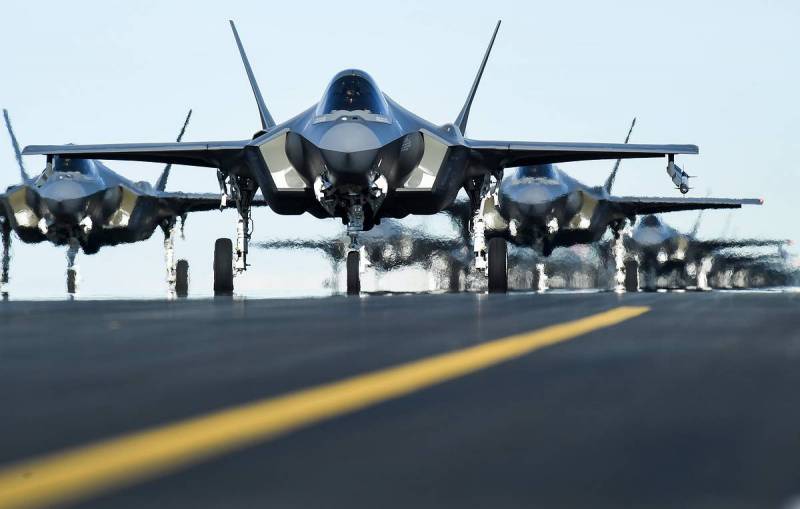
In this regard, the F-35 aircraft (no matter what letter) is a rather interesting platform both for combat use and for further development in terms of modernization.
At the present time, with a truncated electronic warfare complex, the Lightning can hardly be considered as promising a fighter as one might imagine. However, when all work on the modernization and modification of the aircraft is carried out precisely in terms of electronic equipment, it will be a very dangerous and promising machine. Even without the stealth effect.
Sources:
R.L. Mikhailov "Electronic Warfare in the US Armed Forces"
A. I. Kupriyanov, L. N. Shustov “Electronic warfare. Fundamentals of the theory.
Information